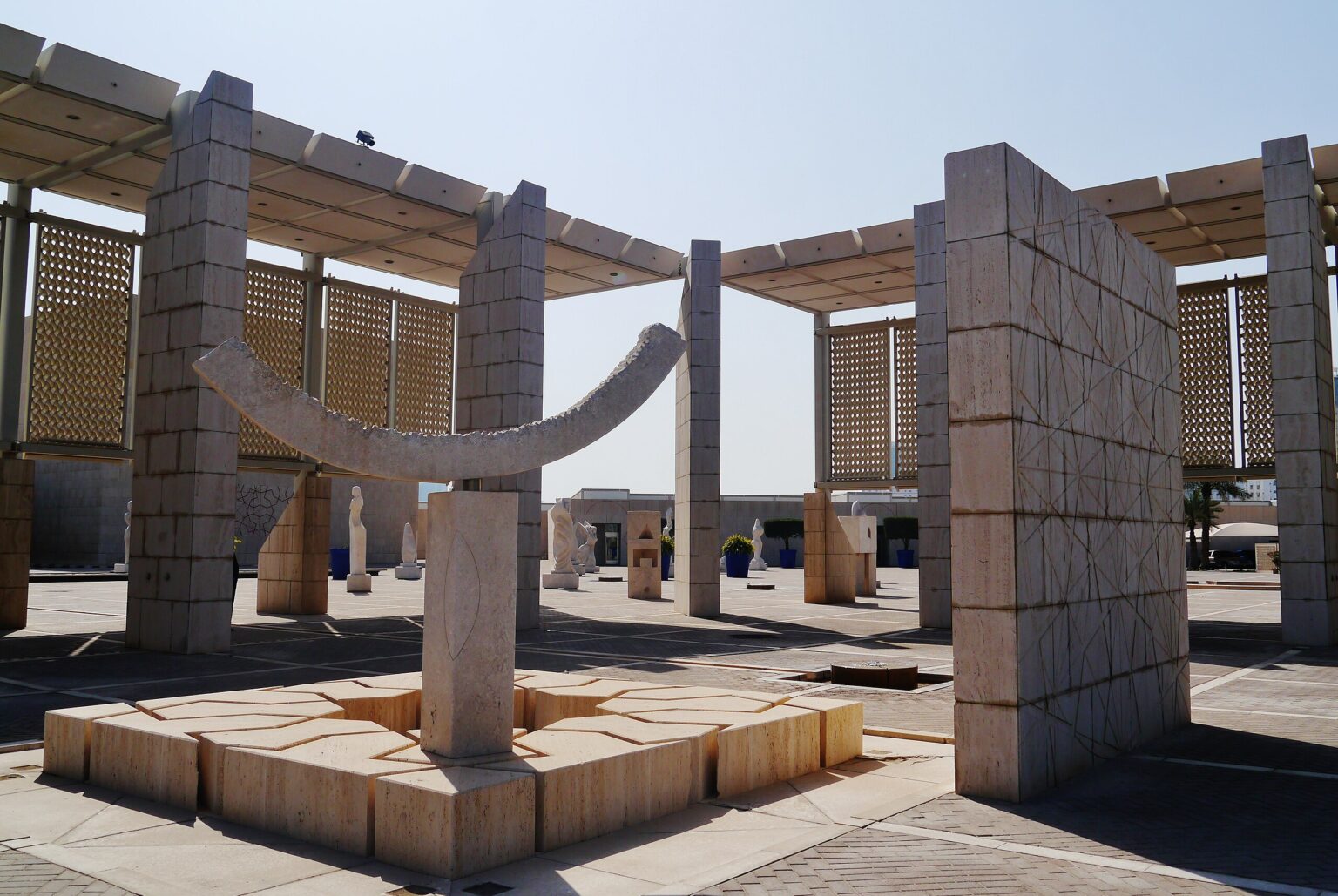The Bahrain National Museum in Manama is a cultural gem that offers a captivating historic journey through 6,000 years of Bahraini history. As the country’s first public museum, its stunning architecture and immersive exhibits make it a must-visit for history buffs, art enthusiasts, and curious travelers. Here are ten highlights to explore during your visit:
1. Dilmun Civilization Exhibits
The museum boasts a remarkable collection from the ancient Dilmun civilization, showcasing artifacts such as pottery, burial mounds, and maritime tools. These pieces unravel the mysteries of one of the Gulf’s most significant ancient cultures, famous for its trading prowess and mythology.
2. Islamic Art and Manuscripts
A section dedicated to Islamic heritage features rare manuscripts, intricate calligraphy, and ceramic artifacts. It’s a visual treat that captures the essence of Islamic art and its evolution across centuries.
3. Bahraini Traditional Lifestyle
Step back in time to pre-oil Bahrain through exhibits of traditional costumes, pearl-diving tools, and reconstructed homes. This section vividly portrays the simplicity and ingenuity of early Bahraini life.
4. Natural History of Bahrain
Discover the island’s biodiversity in the natural historic section. Interactive displays highlight Bahrain’s flora, fauna, and marine life, reflecting the Gulf’s unique ecosystem.
5. Temporary Exhibitions
In addition to its permanent collections, the museum frequently hosts temporary exhibits showcasing contemporary art, photography, and global cultural artifacts. These changing displays ensure every historic visit feels fresh.
6. Archaeological Gems
Artifacts from Bahrain’s archaeological sites, such as the Barbar Temple, reveal the island’s role as a cultural crossroads. The precision of historic ancient craftsmanship on display is awe-inspiring.
7. Pearl Diving Legacy
Bahrain’s pearl-diving heritage is celebrated with exhibits detailing the tools, boats, and lives of pearl divers. This section encapsulates a trade that once defined Bahrain’s economy and historic culture.
8. Architecture and Location
The museum’s modern design, inspired by Bahrain’s ancient burial mounds, harmonizes beautifully with its seaside location. The architecture itself is a sight to behold, offering stunning views of the Arabian Gulf.
9. Hiatoric Art and Contemporary Displays
The museum supports local and international artists through its art gallery. From traditional Bahraini artistry to global contemporary pieces, this space highlights creativity across borders.
10. Café and Souvenir Shop
After exploring, relax at the museum café, which offers picturesque views, or browse the souvenir shop for unique gifts reflecting Bahrain’s culture.
Practical Information on visit
The Bahrain National Museum is open six days a week, closing on Tuesdays. Visitors can explore from 8 AM to 8 PM for an entry fee of 1 BHD for adults and 0.5 BHD for students. Children under six and individuals with disabilities enter free.
Why Visit?
Whether you’re intrigued by ancient civilizations, regional art, or just want a glimpse into Bahrain’s history, the Bahrain National Museum offers an enriching experience. It is a space where past and present converge, providing visitors with stories that transcend time.
Historical and Cultural Significance
- The Role of the Museum: Established in 1988, the Bahrain National Museum is one of the Gulf region’s oldest public museums. It represents Bahrain’s commitment to preserving and showcasing its cultural and historical heritage.
- The Dilmun Civilization: The museum’s artifacts from the Dilmun civilization highlight Bahrain’s ancient role as a center of trade and mythology. This includes seals, tools, and depictions of the ancient practice of burial in circular mounds.
Plan your visit to this iconic destination and immerse yourself in the narrative of Bahrain’s vibrant culture.
Manama’s Bahrain National Museum is more than a historical archive; it’s a celebration of heritage and identity that leaves an indelible impression on its visitors.
Read Next – Qatar: A Regal Journey Through Heritage and Tourism



